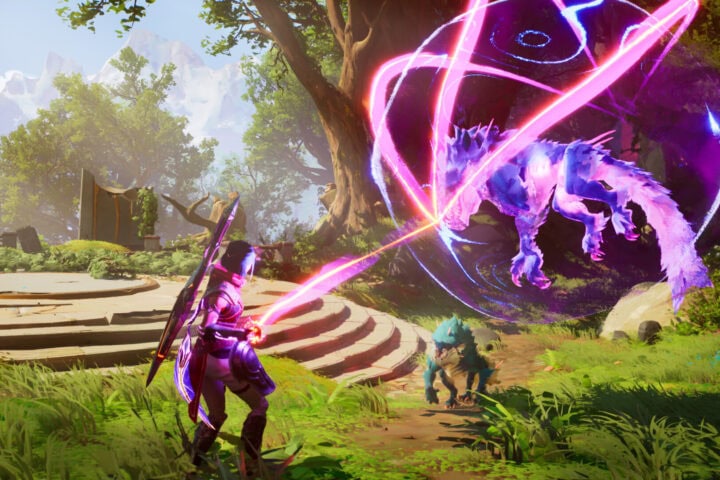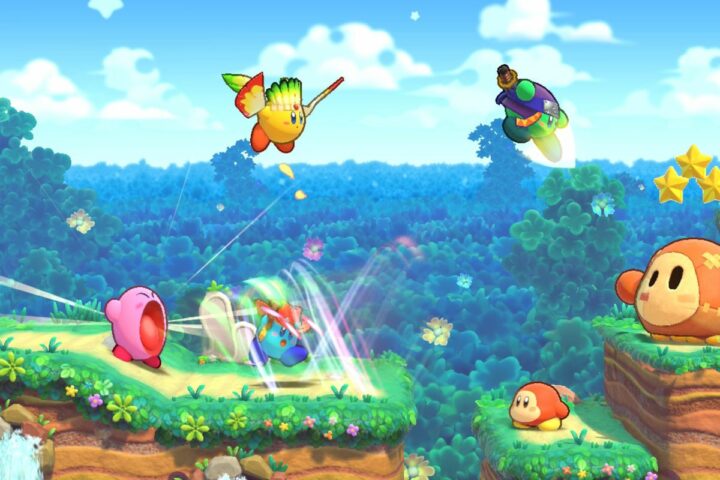Capcom’s long-running Monster Hunter series found little popularity in the West prior to the release of Monster Hunter 3 Ultimate in 2011 for the Nintendo 3DS. Yet, it’s still surprising just how long it took someone to craft an alternate take on its core formula, maybe even a superior one. Enter the strange alliance of Electronic Arts, Koei Tecmo, and Omega Force, who have crafted not just a damn fine riff on Monster Hunter’s established ideas, but a more accessible, welcoming, and engrossing version of them.
Ordinarily, a developer copying another studio’s homework to such a degree would be cause for alarm, but as popular as Monster Hunter has become worldwide, there’s always been more than a few gaps at its center. They’re gaps that the developers at Capcom, who are of the “if it ain’t broke don’t fix it” school of gaming, have been reluctant to address, and Wild Hearts manages to point out and fix nearly every squeaky wheel in that series’s formula.
For one, instead of throwing us in a wild, wooly world of enormous birds and lizards, with only the thinnest of explanations of why and how you’re facing them, Wild Hearts puts in the legwork of making the player learn and respect the world they’ve been dropped into, and the indigenous life therein. That world is a distant, verdant, fabled land called Azuma in feudal Japan. And your deeply customizable player character is a ronin who’s grown weary of the constant betrayals and infighting that have plagued their homeland—feel free to headcanon that the narrative of the recently re-released Like a Dragon: Ishin is playing out right over the mountains—and who seeks to become a more pure breed of hunter far away out in the wild.
Kemono, massive beasts who have been fused with and corrupted nature itself, rule these lands, and our hunter has been tasked by the gods to hunt as many as they can. By itself, that’s a flimsy excuse to hunt some giant monsters, but there’s still a much more reverent vibe to how you approach haunting in Wild Hearts compared to Monster Hunter. Not every animal in Azuma is out to kill you, and you’re meant to respect the ones that are for the battle they provide, the resources they leave behind, and the environment that breeds them.
The battles, though, aren’t so respectful of you. As with Monster Hunter, it mostly involves the player bashing away at seemingly impenetrable behemoths, with no real indication that damage is being done until a limb falls off or a creature falls down dead. But the difference is that Wild Hearts gives you every opportunity to train—drip-feeding new information on how to chain attacks, upgrade, use the environment, and protect yourself from harm.
Interestingly, Monster Hunter isn’t this game’s only clear inspiration. There’s a building mechanic that feels like the strange hybrid of those from Fortnite and Death Stranding, allowing the player to build anything from platforms and springboards in order to launch into the air over obstacles and kemono, to magical “radio” towers that will help you track prey, to permanent zip lines that allow you to gloriously fly across the game’s terrain.
That mechanic can be clunky in the early going. Just as in Fortnite, you have to open a menu right in the midst of combat to build a structure, and getting into the rhythm where you instantly know what structure you’ve hot-keyed into what slot while a giant animal is barreling toward you is a lot to process, but the learning curve is smaller than might expect, and there’s at least room to practice. That’s because Wild Hearts is willing to set you up for success, and it does so without sacrificing the vaunted difficulty that this type of game is known for.
Still, Wild Hearts is ultimately a monster-hunting game, and just as in Monster Hunter, the core flaw of just how arduous it can be to take down prey, even with a little help from your friends, is present here. The story, though, at least provides a bit of motivation in hard times. Namely, the game’s main hub world, a fishing village powered by magic, provides some surprisingly poignant little tales worth seeing through to the end, and which home in on the important role that you play in helping to provide for that community. The results of your good work are tangible when those tales are said and done, which in the end makes the monster hunting at the center of Wild Hearts feel, if not less like work, then at least purposeful.
This game was reviewed with code provided by fortyseven communications on February 16.
Since 2001, we've brought you uncompromising, candid takes on the world of film, music, television, video games, theater, and more. Independently owned and operated publications like Slant have been hit hard in recent years, but we’re committed to keeping our content free and accessible—meaning no paywalls or fees.
If you like what we do, please consider subscribing to our Patreon or making a donation.




